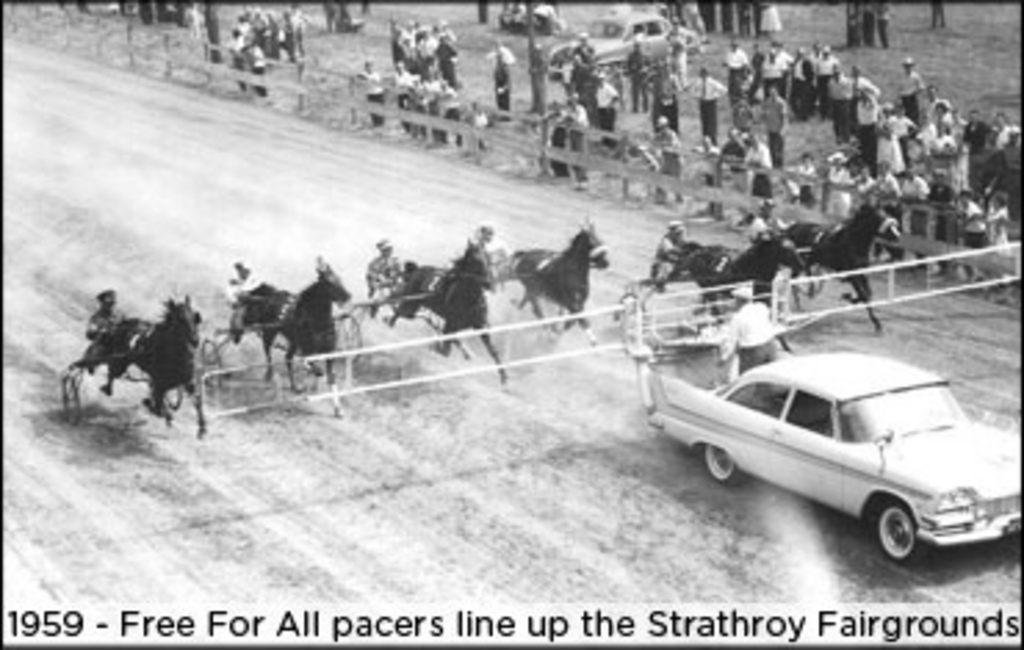SC Rewind: The Starting Gate

Writer Robert Smith talks about the development of a revolutionary part of harness racing and how it made its entrance over 60 years ago.
As a young boy of 10 or 12 back in the mid 1950's, I experienced a thrill that none of my friends or classmates had ever experienced. Unfortunately it wasn't one of those things you get get up in front of your grade 5 class and brag about. The problem was that probably no one would know what you were talking about and furthermore and perhaps worse was that no one would even care!
During the summer months, while attending the afternoon races with my father in the small town of Leamington, I had actually been lucky enough to get a ride in the starting gate. My Dad was a friend of the gate's operator and when he asked if I'd like a ride I was all smiles.
I was nervously perched in the passenger seat and the driver warned me to get ready for a sudden speed up and that it might get a little noisy and dusty, but only for a short time. I peered out through the back of the specially outfitted car and watched the field of horses approach the gate. The starter who sat up in the back on a perch shouted out orders to the drivers. "Bring up the two...come on with the four...straighten up the six" ...and so on. Soon the sound of pounding hoofs and the whir of the speeding car made it all seem so exciting for a young boy who had not seen too much in his as yet short lifetime. The field was on its way and all too soon the experience was over and I was back in my seat in the antiquated wooden grandstand. Little did I realize at the time how relatively new and revolutionary was the mobile starting gate.
The early days of harness racing were plagued with problems in getting races started. "Open Scoring" as it was referred to involved a field of horses approaching the starting line literally on their own. The Starter, undoubtedly the most important official on the grounds, was perched in a tall stand right at the start line. He observed the field and at the split second they reached the wire he called "GO" and the field was off. This sounds pretty routine but it seldom was. If any horse scored ahead of the pole (#1) horse a recall was signaled. If other horses were not in what the starter considered a proper position, again a recall was in order.
At times recall after recall occurred; I have read that as many as 18 occurred in a single start. There were often controversies that arose and it was not uncommon for tempers to flare. There was even speculation at times that recalls were caused on purpose by a driver trying to gain advantage by upsetting another horse or driver. Fans in the stands often became restless and frustrated at the happenings. Worse yet, many headed for home. The problems were many.
A solution to the problem eventually came along . Racing historians generally credit a man named Steve Phillips with inventing the mobile starting gate, often said to be the "Saviour" of the modern day sport we know today.
Phillips hailed from Xenia, Ohio. He was the son of a noted horseman and had served as a starter in the old system. The story is told that he was in Lexington in 1937 and a motion picture crew was on the grounds shooting horse scenes. The director mounted a camera on the back of a car as he wanted a shot of horses trotting toward the camera. Because of his familiarity with the horses and drivers, Phillips was asked to ride along and instruct the drivers. From this scenario came a moment of brilliance.
As Phillips watched the horses nose up to the car and trot along in a perfect line, the thought struck him that this might be the answer to the starting problem. That winter back in Central Ohio he started to put his idea into action by mounting two steel arms on the back of a pickup truck. He tried it and it worked. His idea remained a dream for some time as it seemed that nobody in harness racing was willing to invest money in such a harebrained scheme as his in those lean days.
Eventually as night racing became a reality his idea was taken seriously and in 1946 his newly revised and improved mobile starting gate first appeared at Roosevelt Raceway in Long Island, New York. Thus was born one of the sport's greatest innovations. Today the starting gate is barely noticed and undoubtedly assumed to have been here forever.
Stay tuned to hear about the new-found starting gate's appearance in Canada.


I have been taking my son to
I have been taking my son to harness races throughout ontario for the past three years. Reading your experience about riding in the starting gate car made think of the excitement my son had at Rideau Carlton Raceway. In Ottawa the have taken people around in the starting car, whether it be kids or a group from the clubhouse. I can still see the sure joy on his face talking now about his ride in the car when he was 7.